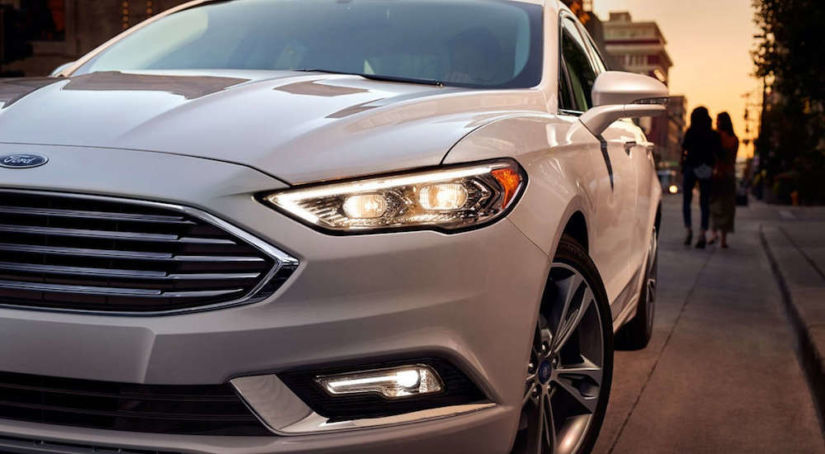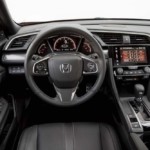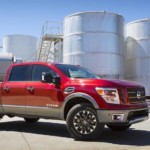Something feels unbalanced about the comparing the 2017 Honda Accord vs 2017 Ford Fusion. With a 30 year difference between the two offerings, I’m not sure whether I feel like I’m challenging a 70-year old man to a race, or being challenged to a race by a 10-year old boy.
Either way, the expectations of such a comparison differ from how you view either brand. On one hand, import brands like Honda tend to offer more timely inclusion of technology and updated design initiatives. On the other hand, the Ford Fusion has managed to retain relevance to the point where there was no immediate pressure for updates going into 2018.
That aside, let’s take a closer look at both, and see which truly does come out on top. But first let’s get pricing out of the way, with the Accord starting at $22,455 MSRP, and the Fusion priced to start neck-in-neck at $22,120 MSRP.
Performance
Generously equipped with a 2.4-liter four cylinder, the (base) LX trim of the Accord summons 185 horsepower and 181 lbs-ft of torque. Optional transmissions include a six-speed manual, or a (CVT) continuously variable automatic and, with the latter you can expect to receive 32 mpg (highway, 23 city).
Anyone concerned by the pairing of a four-cylinder to a CVT, might be surprised by the responsiveness offered by the Accord. With composed handling, effortless, yet precise, steering and confident braking there is very little not to like about this Honda model.
The Ford falls right in line with a 2.5-liter four cylinder paired to a six-speed automatic transmission, on the (base) S trim. Rated at 175 horsepower and 175 lbs-ft of torque, the Fusion’s fuel economy is estimated at 34 mpg (highway, 23 city).
Higher trim levels on both the Accord and Fusion can enjoy the option of upgraded engines, but in terms of the base trim level, these two stand shoulder-to-shoulder. From engine spec and power, to overall handling, this one’s too close to call. (1:1)
Exterior Design
No matter how subjective vehicle design can be, there are times when we struggle to pick one model over another, and there are times when it seems so easy. This happens to be the latter.
While the Accord may not stop any hearts standing on its own, its reflective of strong design choices that enhance its classic sedan styling and make it appear more exciting. Favoring clean lines over gimmicks, the body is fairly simple overall, but the front-end is successful in giving it a fresh look and feel.
The Fusion manages to take a step in the opposite direction. While I’ve heard some applaud the front-end design of the Fusion, as being ‘classic and refined,’ I find that it does little to enhance the overall aesthetic. In fact, it might even serve to encourage the misgivings that some people (myself included) have in regard to sedan styling (namely, the fact that it can be boring). Whether or not this was part of the motivation for the ridge hood, but this feels gimmicky and disjointed from the rest of the design.
Overall, it’s easy to favor the Accord in terms of its exterior design. (2:1 Honda)
Interior Design
Here’s another easy one for us.
Although both cabins are produced of quality materials, there is a jarring disparity in the design sensibilities used in each. Whereas the the Accord utilizes elongation in a recurrent manner evocative of luxury sedan styling, the Fusion seems to favor boxiness. Feeling very ‘North/South/East/West,’ there are few modern curves present in the Fusion’s interior. And while the Fusion features some nice technology, the design detracts from it, making it appear cheaper than it deserves.
As for comfort, the Accord offers more rear headroom than the Fusion, making it more comfortable for taller passengers. Overall, the Accord sits as one of the most competent designs in the segment, doing most everything right. It sets a high-bar for the Fusion which, in all fairness, may be very appealing to certain people. We’re just not ‘those people.’
As a footnote, both offer average storage and cargo space, but there’s just not much of anything to make this a hard choice. (3:1 Honda)
Technology
At the (base) LX trim level, the infotainment system of the Bluetooth-enabled Honda Accord is based around a 7.7-inch display screen (with rear camera) and a four-speaker sound system. Worth noting is the absence of a touchscreen on lower trim levels, but the voice controls are responsive and well-designed. The sound system includes CD, auxiliary, and USB inputs, and the Accord offers both Apple CarPlay and Android Auto to enhance music streaming options.
Also present is the Honda Sensing driver assist aids, which include adaptive cruise control, collision warning, and lane departure warnings. Technology in general may not be an area where the Accord excels, then again, we might just be getting a little spoiled.
The (base) S level of the Fusion hits (and misses) many of the same beats. Bluetooth-enabled, the four-speaker sound system offers CD, auxiliary and USB inputs, as well as smartphone integration. Optional equipment includes an array of driver assist and safety features, which would certainly be welcome as a standard inclusion.
While neither is offering up any game changers, we’re going to give this one to the Accord, based solely on the inclusion of safety features standard. (4:1 Honda)
Results
It’s worth saying that both the Accord and the Fusion are examples of vehicles that have a lot to offer at higher trim levels. Overall, the Accord just has a shorter distance to travel, offering more at the base level, along with an overall better aesthetic.



